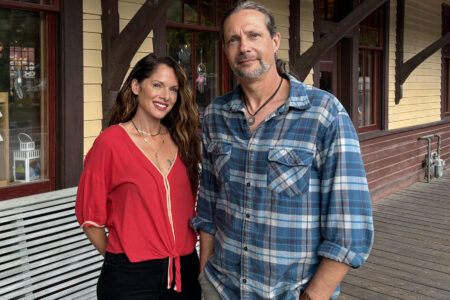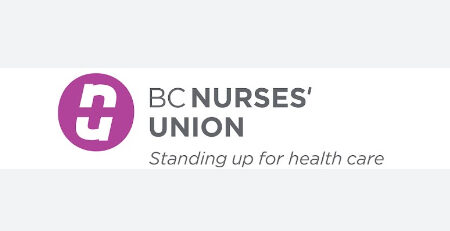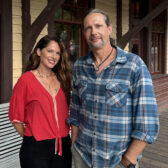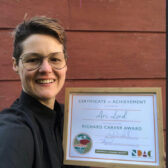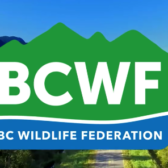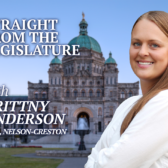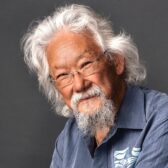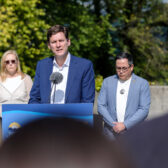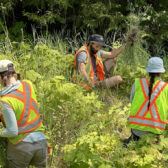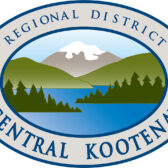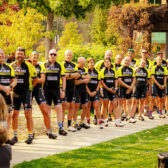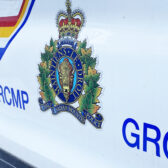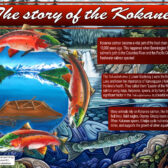Radiation, food for all, Nelson’s identity, Hall Street vision, e-books, greenhouse gases, and a communication complaint: Nelson City Council November 18, 2013
Every second meeting of council is a Committee of the Whole, at which local groups, individuals, and city departments are given time to present to council. The following is a summary of presentations to the Committee of the Whole on November 18, 2013
Electromagnetic radiation
Shauna Hayes of the group Concerned Citizens for Safer Technology told council she is a consultant on wireless transmissions and has been measuring electromagnetic signals on Baker Street which she says have increased a lot in the past year. She recommended that the city map and monitor the various sources of signals, which she says are currently installed by anyone without any regulation.
She said Health Canada’s Radio Frequency Exposure Guidelines are currently being updated. “While they are debating safety, you should step forward and become aware,” she told council.
Mayor Dooley said the Federation of Canadian Municipalities is involved in the federal government’s updating of the transmission guidelines.
Communication
Nelson blogger Claus Schunke appeared before council, criticized its methods of communication with the public, and made some suggestions for improvement.
Food
Kim Charlesworth, co-director of the Nelson Food Cupboard, told council that the highlights of the group’s activities in the past year included 170 Christmas hampers, renovations to improve storage space, collaboration with the SEEDS greenhouse project, $15,820 worth of gleaned fruit and vegetables in the harvest rescue project, and the formation of a food skills program to teach the growing, cooking, and preserving of healthy food.
She discussed outreach, funding, community support, resources, and gaps. She recommended that council apply for an Interior Health grant to conduct an asset mapping and needs assessment process related to local food, and that it develop a food policy council.
Identity
Greg McKenzie and Chris Drysdale, marketing consultants, appeared before council and asked that it “consider the establishment of a Community Identity Project for Nelson, in order to take ownership of how we are perceived, capitalize on our assets, and leverage the benefits that are derived from being unique.”
They said the project would involve the whole community and would tie the various projects the city is doing or has already done—the downtown waterfront plan, the Path to 2040 Sustainability Strategy, the branding work done with the consultant Roger Brooks some time back, and the city’s logo development ten years ago— to produce a definitive statement or concept of what Nelson is.
Council seemed unclear about how the proposed project would be different from a branding exercise or from work already done, but it nevertheless referred the matter to staff for consideration.
Hall Street
Rob Fershaw and Jim Roe of MMM Consulting, the Kelowna company hired to re-design Hall St., presented the latest version of their plan to revitalize and upgrade the street from the top at IODE Park to the bottom at the waterfront
The plans they presented are essentially as outlined in a story in The Nelson Daily in June, 2013.
They said the project should be built in several phases beginning with the Vernon to Front Street section. Fershau and Roe said the full project will cost between $2,202,000 and $3,600,000.
The project would proceed as various grants and other funding become available.
They explained that they recently commissioned a recent traffic study regarding problems at the Vernon and Hall, Front and Hall, Lakeshore and Hall, and Front and Cedar intersections, and that they will be presenting recommendations to council soon. The traffic study is covered in a previous story in The Nelson Daily published in September, 2013.
In a brief regular meeting held after the Committee of the Whole, council adopted the Hall St. report.
Books and e-books
Library board chair Diane Harke and head librarian June Stockdale updated council on the achievements, priorities, finances, partnerships, and community outreach in the past year.
The library’s income for 2013 was $893,000, which slightly exceeds its expenses. Sixty-five percent of that income is from the city.
During the year there was a small decrease in visits to the library from 12,350 in 2012 to 11,680 in 2013, and a similar decrease in books borrowed. There were increases in e-books and magazines, database use, website hits, reference questions, and use of public computers.
Compared with twelve other libraries in towns with similar populations, Nelson is above the average in circulation and in-person visits.
Greenhouse gases
Fiona Galbraith of Nelson Hydro reported on progress in the city’s Corporate Greenhouse Gas Reduction Plan.
“In the 2012 GHG emissions inventory,” she said, “there was a 15% decrease in emissions, compared to that of the 2007 baseline year. The City is more than halfway towards achieving its 2015 reduction goal of 25%, equivalent to 300 tonnes of CO2e.”
She said the initiative has so far saved the city $57,000.
This project will be subject of an upcoming story in The Nelson Daily.
Energy improvements
Alex Love of Nelson Hydro reported on the success of two major projects of the past year, the upgrading of the Rosemont Substation and the downtown voltage conversion.
He said he has received a draft feasibility report for the proposed district energy system and that he will be bringing a recommendation to council in the spring of 2014.
He said the EcoSave program continues to see a strong level of customer interest. “We expect to have 400 registrants by the end of 2013 – double the original goal of 200.”
Love said he will be recommending the continuation of this program which is nearing the end of its run as a two-year pilot.



